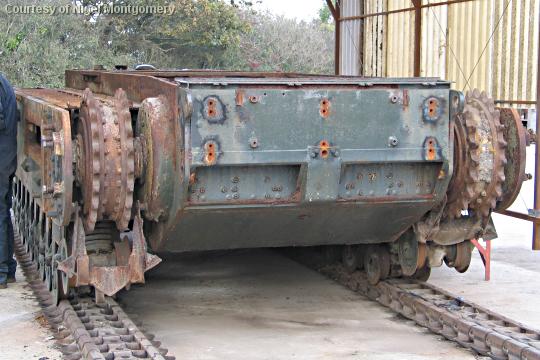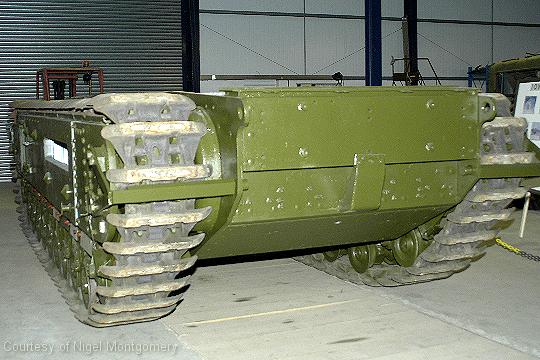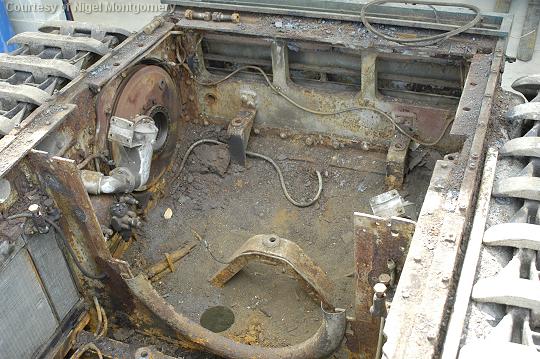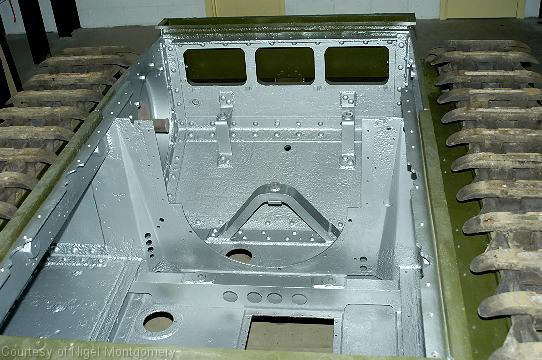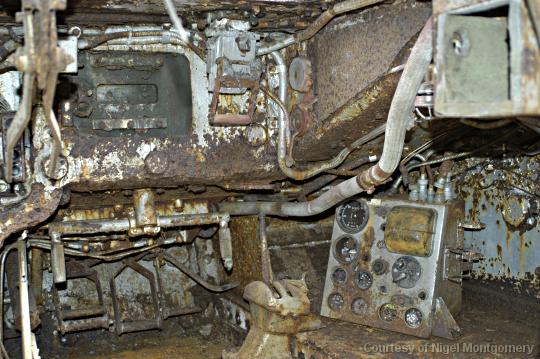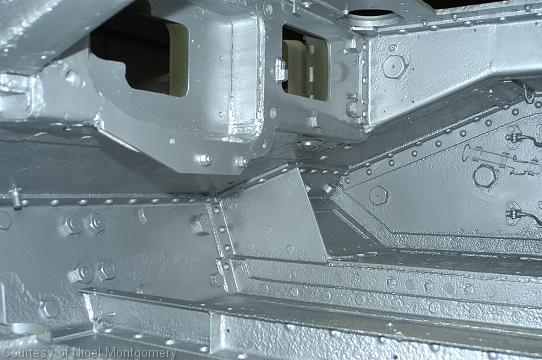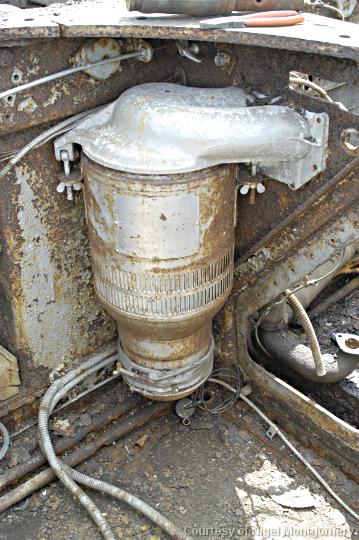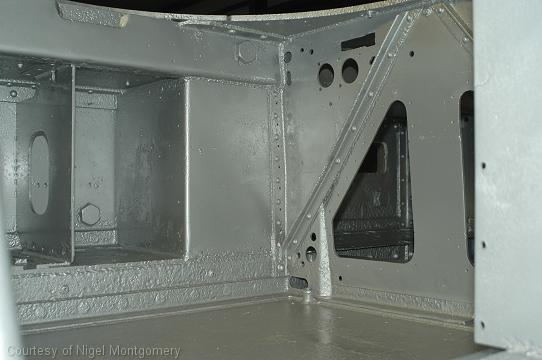HULL
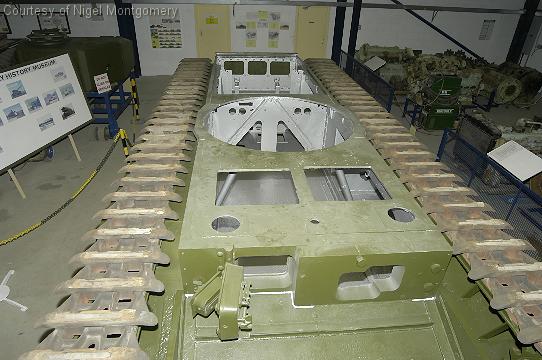 |
View of the hull as it currently stands today. |
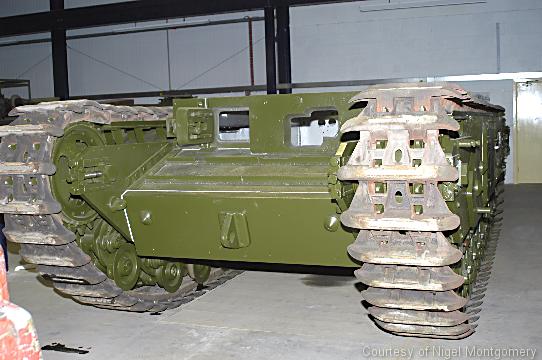 |
|
|
|
This photo shows that the hull has the earlier style 5 inch air outlet and we have a good view of the the left hand mud scaper - details of which are mostly hidden when the tracks are fitted.
|
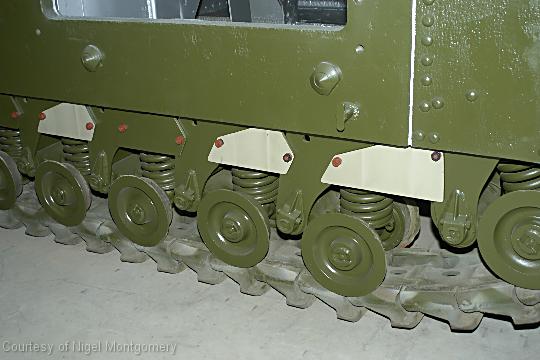 |
replacement bogie plates Intersting mix of 'old' and later style bogies - note how the fulcrum boss on the left most bogie is shorter and lacks the reinforcing strut compared to the one to its right. |
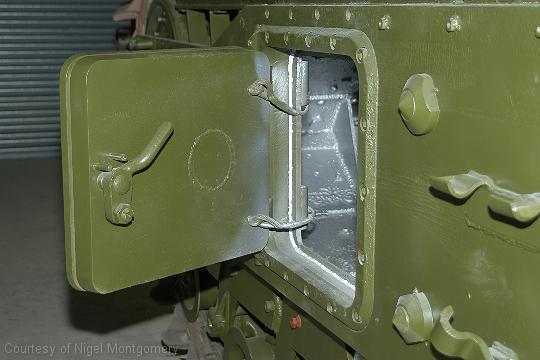 |
Note the "early style" door surround with mounting bolts all the way around a later pattern omitted the bolts in the top and bottom curve). We can see here a good view of the conical end of the longer hull armour bolts. The bolt are retained with 'nut' which have a spot weld to 'lock' in place. Not all the hull armour bolts are 'long' ones some are shorter and fit 'flush' to the outer surface. |
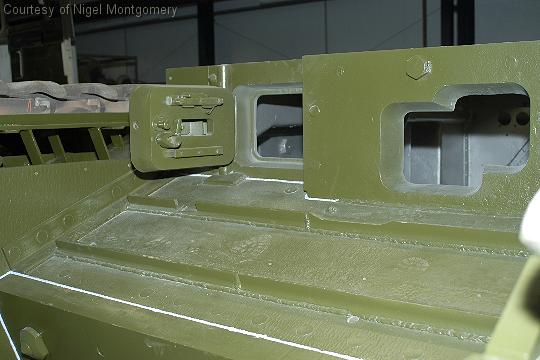 |
|
|
|
These before and after photos show the engine compartment to the front, transmission to the rear. Note the characteristic three hole rear bulkhead of a 5 inch air outlet. Vehicles produced or modified with 8 inch outlets had this panner removed. |
|
|
Hull interior showing Co-driver's and Driver's positions. The riveted construction is clearly visible as are the large hexagonal bolts used to secure the outer armour plate. |
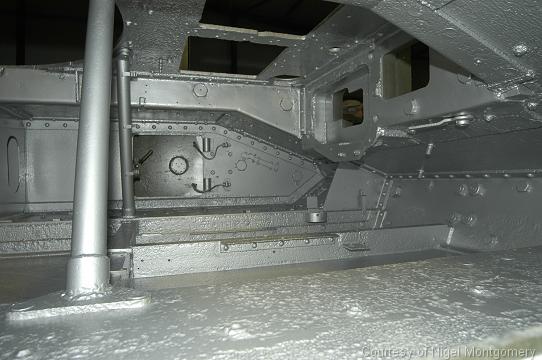 |
Similar view to above but from the opposite side. |
|
|
RHS pannier and engine compartment bulkhead. In the bottom photo the air filter has been removed and the circular holes in bulkhead can be seen where the filtered air is ducted into the engine compartment. |
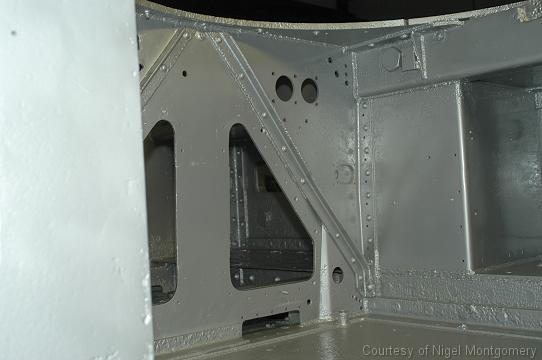 |
LHS pannier and engine compartment bulkhead |
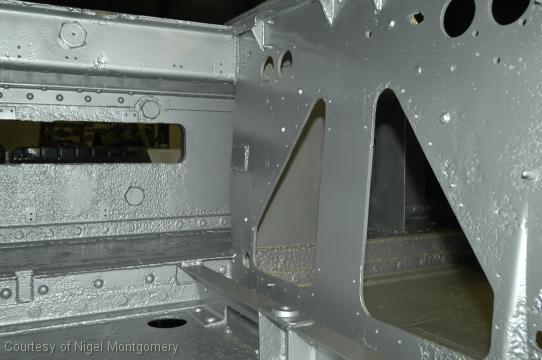 |
Here we're in the engine compartment with the bulkhead to the fighting compartment to the front. Opposite us is the left hand side air (for cooling) Note the engine support brackets on the fllor and also the armour bolts around the air intake.
|
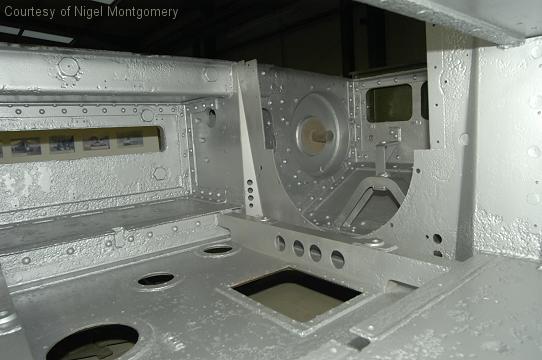 |
Here we're in the engine compartment looking rearward into the transmission compartment. We can clearly see the engine inspection floor traps and the circular recesses for the final drives
|
